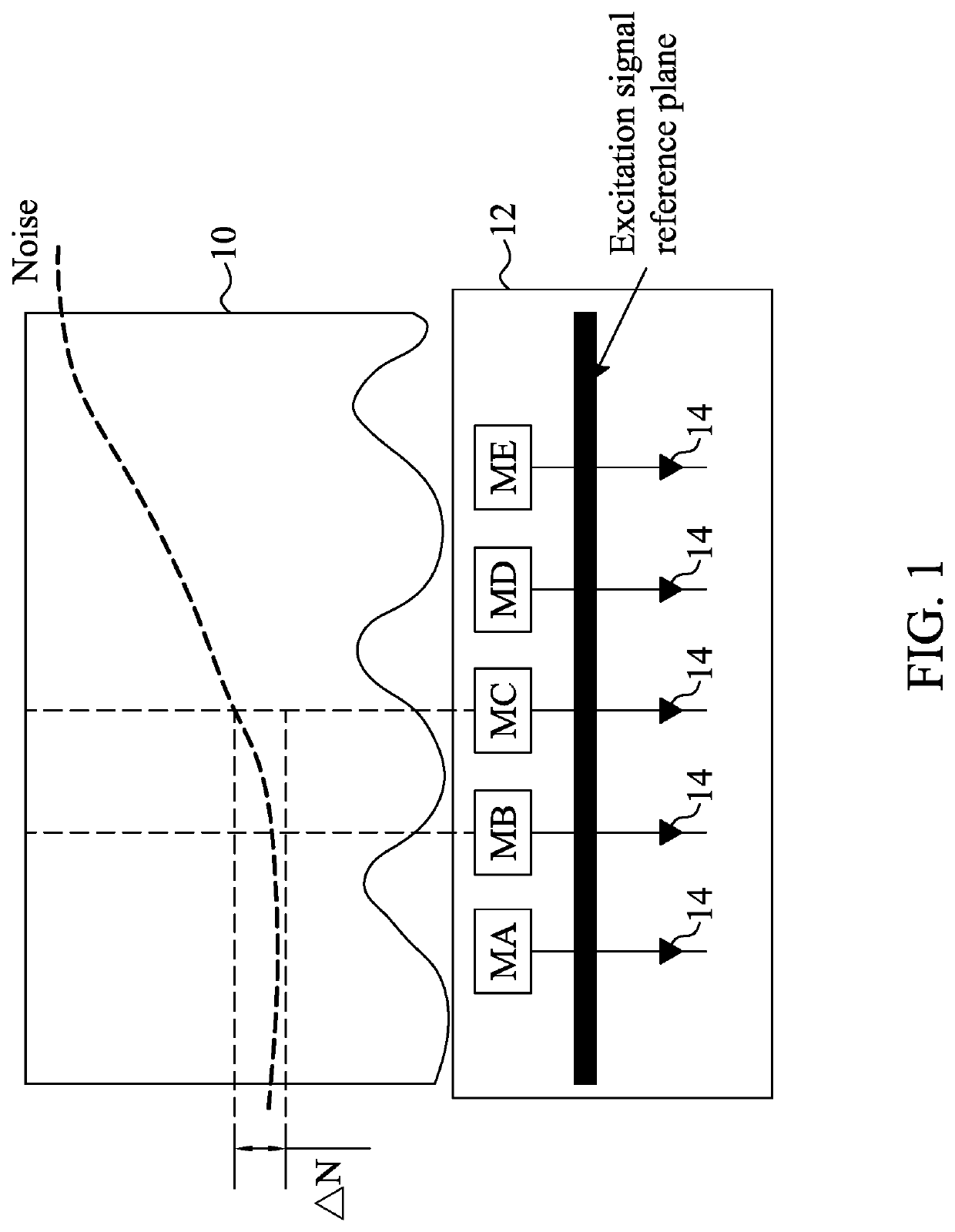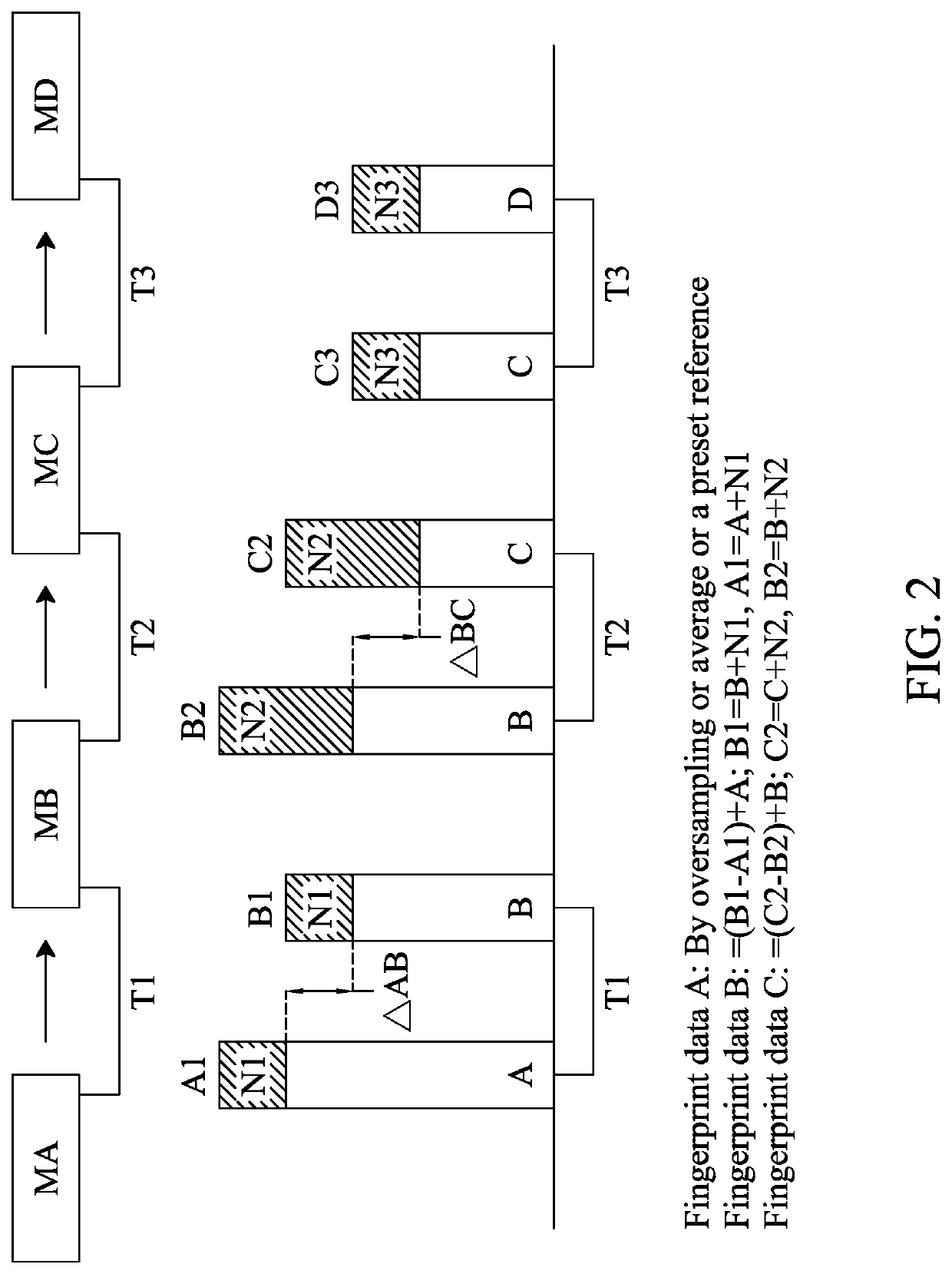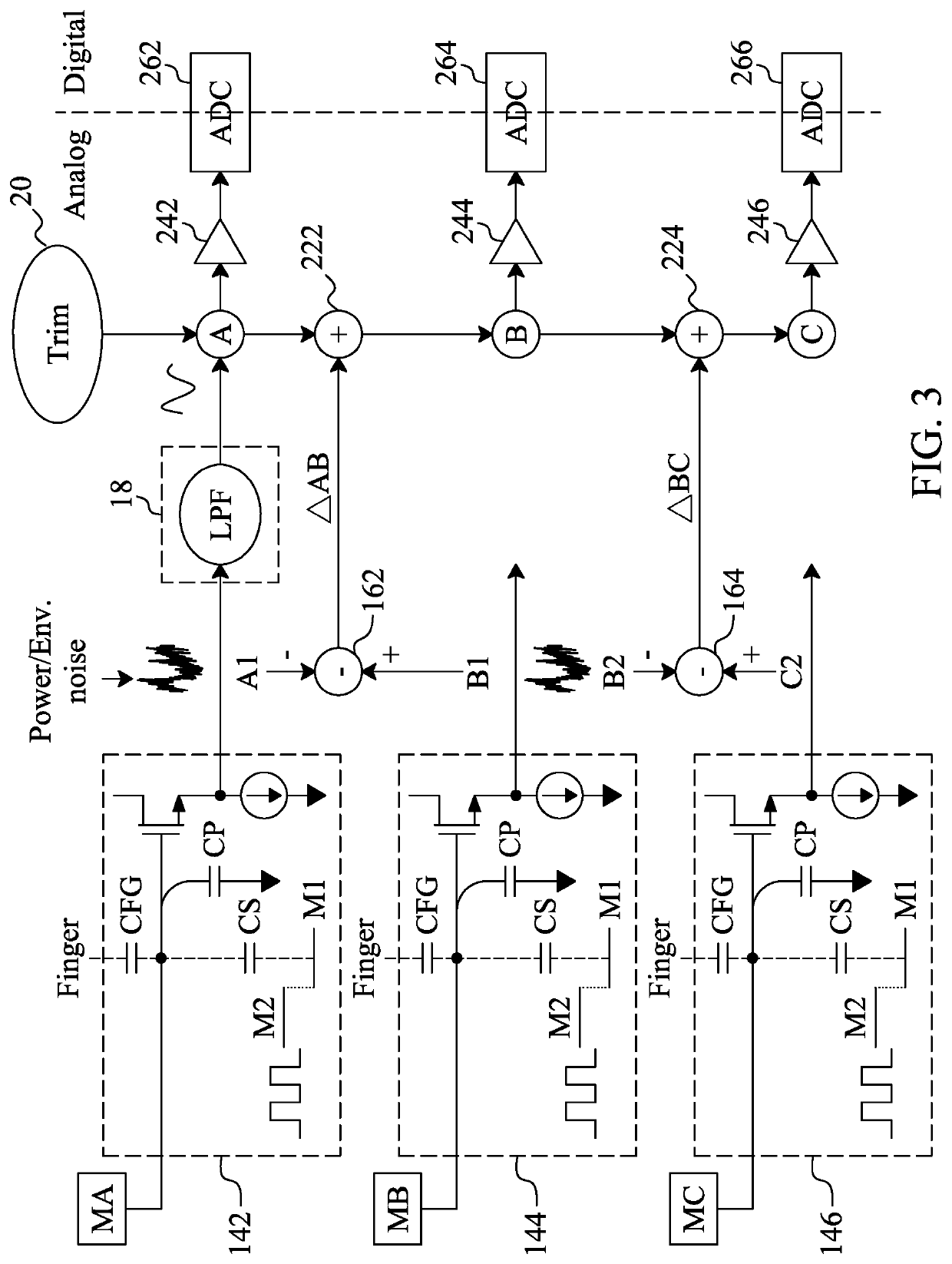Reduction of noise interference for fingerprint sensing
a fingerprint sensor and noise interference technology, applied in the field of fingerprint sensor noise reduction, can solve the problems of occupying space, generating inaccurate fingerprint sensor sensing, incurring extra cost, etc., and achieve the effect of reducing noise interference and eliminating nois
- Summary
- Abstract
- Description
- Claims
- Application Information
AI Technical Summary
Benefits of technology
Problems solved by technology
Method used
Image
Examples
first embodiment
[0020]Please refer to FIG. 2 for an illustration of the principle of the present invention and FIG. 3 for the fingerprint sensor 12 according to the present invention. A first sensing circuit 142 and a second sensing circuit 144 detect a first sensing plate MA and a second sensing plate MB, respectively, at a same time point T1, to obtain first sensing data A1 of the first sensing plate MA and second sensing data B1 of the second sensing plate MB, wherein the first and the second sensing circuits 142 and 144 are connected to the first and the second sensing plates MA and MB respectively. As the first sensing plate MA and the second sensing plate MB are adjacent to each other, the first sensing data A1 and the second sensing data B1 have a same noise. As shown in FIG. 2, the first sensing data A1 includes first fingerprint data A and noise N1, and the second sensing data B1 includes second fingerprint data B and the same noise N1. The subtractor 162 subtracts the first sensing data A...
second embodiment
[0024]FIG. 4 shows the fingerprint sensor 12. The circuitry in this embodiment is identical to that in FIG. 3 except that the buffers 242 and 244 in FIG. 4 are connected to the sensing circuits 142 and 144 respectively, and that therefore the sensing data A1 and B1 output respectively from the sensing circuits 142 and 144 will go through the buffers 242 and 244 respectively before noise elimination (i.e., the subtraction and addition operations).
third embodiment
[0025]FIG. 5 shows the fingerprint sensor 12. The circuitry in this embodiment is different from that in FIG. 3 in that the fingerprint sensor in FIG. 5 uses a digital circuit to perform subtraction and addition for noise elimination. In FIG. 5, the first sensing data A1 detected by the first sensing circuit 142 goes through the noise elimination circuit 18 to have noise filtered out and thereby generate the first fingerprint data A. The first fingerprint data A is then fed through the buffer 242 into the ADC 262, in order for the ADC 262 to convert the first fingerprint data A into the digital first fingerprint data A_d, and for the digital adjustment circuit 32 to adjust the digital first fingerprint data A_d as needed. More specifically, the first sensing circuit 142 and the second sensing circuit 144 sense the adjacent sensing plates MA and MB respectively at the same time to generate the first sensing data A1 of the sensing plate MA and the second sensing data B1 of the sensing...
PUM
 Login to View More
Login to View More Abstract
Description
Claims
Application Information
 Login to View More
Login to View More - R&D
- Intellectual Property
- Life Sciences
- Materials
- Tech Scout
- Unparalleled Data Quality
- Higher Quality Content
- 60% Fewer Hallucinations
Browse by: Latest US Patents, China's latest patents, Technical Efficacy Thesaurus, Application Domain, Technology Topic, Popular Technical Reports.
© 2025 PatSnap. All rights reserved.Legal|Privacy policy|Modern Slavery Act Transparency Statement|Sitemap|About US| Contact US: help@patsnap.com



